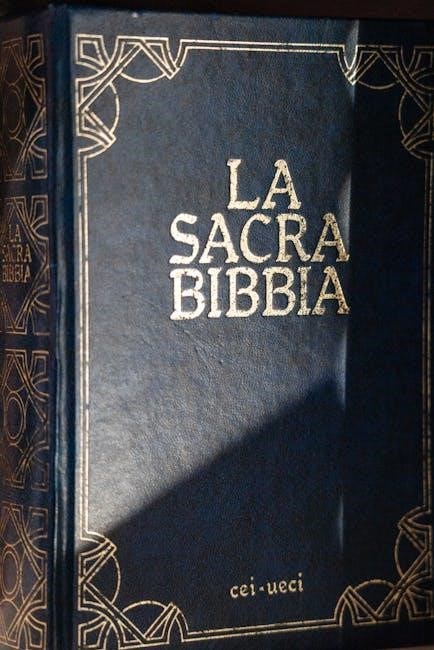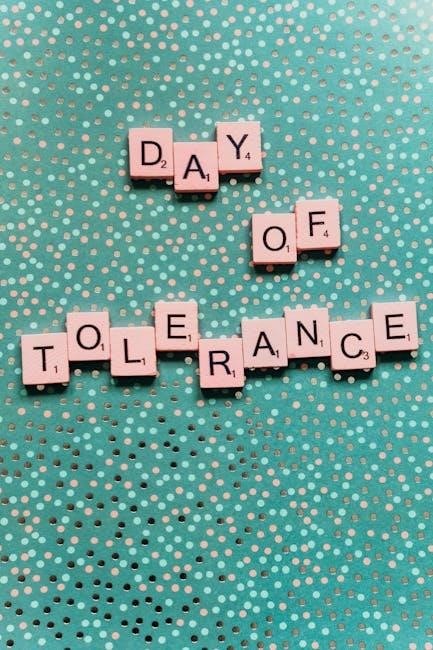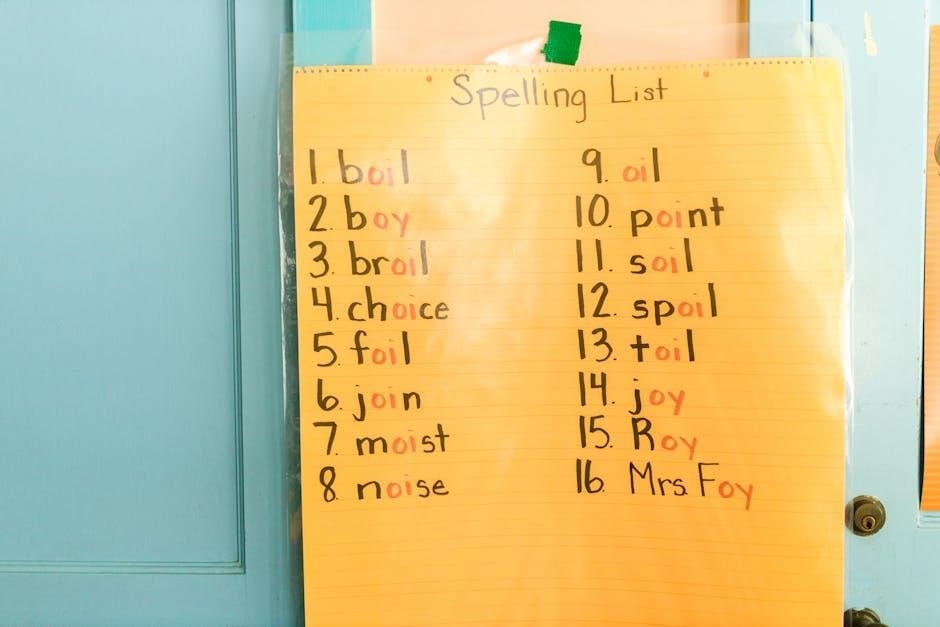Manual air ventilators are essential devices providing mechanical ventilation support in emergencies. They are cost-effective, portable, and crucial when commercial ventilators are unavailable, especially during crises like COVID-19.
1.1 Definition and Purpose
A manual air ventilator is a mechanical device designed to assist or replace spontaneous breathing in patients. It operates manually, providing positive pressure ventilation to deliver air into the lungs. The primary purpose of these devices is to support patients who cannot breathe adequately on their own, ensuring sufficient oxygenation and carbon dioxide removal. They are particularly vital in emergency medical situations, such as respiratory failure or cardiac arrest, where immediate ventilation is critical. Manual ventilators are often simple, cost-effective, and portable, making them indispensable in low-resource settings or during crises like the COVID-19 pandemic. Their design integrates components like the Ambu bag, allowing for reliable and consistent ventilation support.

1.2 Historical Context and Development
Manual air ventilators have evolved significantly over the years, with their origins tracing back to basic respiratory support devices. The concept of manual ventilation dates to the mid-20th century, when devices like the Ambu bag were introduced to provide emergency breathing assistance. Over time, these devices were refined to improve portability and ease of use, becoming critical tools in emergency medicine. The COVID-19 pandemic accelerated innovation, leading to the development of low-cost, DIY ventilators using readily available components like Arduino boards and sensors. These advancements ensured that manual ventilators could be produced quickly and affordably, addressing shortages in healthcare resources during crises. Their historical development reflects a growing need for accessible, reliable ventilation solutions in emergency settings.
1.3 Importance in Emergency Medical Situations
Manual air ventilators play a vital role in emergency medical situations, particularly when commercial ventilators are scarce. They provide critical breathing support for patients with respiratory failure, serving as a lifeline during crises like the COVID-19 pandemic. These devices are portable, easy to use, and can be assembled quickly with components such as Arduino boards and sensors, making them indispensable in resource-limited settings. Their ability to deliver uninterrupted mechanical ventilation ensures patient survival until advanced medical care is available. This accessibility and reliability have made manual ventilators a cornerstone of emergency response, especially in situations where traditional equipment is unavailable or overwhelmed.

Design and Components of a Manual Air Ventilator
Manual air ventilators feature a compact design with essential components like Arduino boards and sensors, ensuring portability and affordability for emergency medical use, with easy assembly.
2.1 Overview of Key Components
A manual air ventilator consists of essential components like an Arduino board, sensors, stepper motor, motor driver, LCD display, and power supply. The Arduino board acts as the brain, controlling the system. Sensors monitor parameters like temperature and breathing rate, ensuring accurate ventilation. The stepper motor drives the mechanism, providing consistent airflow. The motor driver amplifies signals for smooth operation. An LCD display shows real-time data for easy monitoring. A reliable power supply, often battery-powered, ensures portability and uninterrupted use in emergencies. These components work together to deliver efficient, life-saving ventilation support, making the device both functional and user-friendly.
2.2 The Role of the Ambu Bag
The Ambu bag, or self-inflating bag, is a critical component of manual air ventilators, enabling manual ventilation in emergency situations. It allows healthcare providers to deliver breaths to patients when mechanical ventilation is unavailable. The Ambu bag is compatible with DIY ventilators, ensuring continuous airflow and pressure support. Its design enables easy integration with the ventilator’s control system, providing a reliable backup option during power outages or system failures. The Ambu bag’s simplicity and effectiveness make it indispensable in critical care settings, particularly during crises like the COVID-19 pandemic, where it helps maintain patient breathing support when resources are limited.
2.3 Arduino and Sensor Integration
Arduino and sensor integration play a pivotal role in modern manual air ventilators, enabling automation and precise control. By incorporating Arduino boards, these devices can automate ventilation processes, ensuring consistent and reliable airflow. Sensors, such as those for temperature, BPM (breaths per minute), and oxygen levels, provide real-time monitoring and feedback. This integration allows the ventilator to adjust settings dynamically, ensuring optimal patient support. The Arduino system processes data from these sensors, enabling advanced features like adjustable ventilation rates and pressure monitoring. This technology enhances the ventilator’s functionality, making it more responsive and user-friendly, especially in emergency scenarios where precise control is critical for patient care.
2.4 Power Supply and Portability Features
Manual air ventilators are designed with portability and reliable power supply in mind, ensuring they can function in diverse settings. Many models utilize USB connectivity or rechargeable batteries, making them ideal for emergency situations where access to electricity is limited. Their lightweight and compact design allows for easy transportation, enhancing their utility in remote or disaster scenarios. These features ensure uninterrupted operation, critical for patient care. The combination of portability and a stable power supply makes manual ventilators indispensable in emergencies, providing life-saving support when traditional medical equipment is unavailable.
Assembly and Construction of a DIY Ventilator
Assembling a DIY ventilator involves using readily available components, requiring meticulous planning and a deep understanding of its parts, aided by detailed diagrams for effective construction.
3.1 Step-by-Step Assembly Guide
Begin by gathering all components, including the Arduino board, stepper motor, driver, sensors, and Ambu bag. Connect the sensors and motor to the Arduino according to the provided diagram.
Next, assemble the housing using hand tools, ensuring proper alignment of moving parts. Integrate the Ambu bag into the system, securing it firmly.
Finally, test the ventilator by powering it on and observing its operation. Ensure all components function seamlessly before use in emergency scenarios.
3.2 Required Tools and Materials

To construct a manual air ventilator, essential components include an Arduino board, stepper motor, motor driver, sensors, and a potentiometer. Additional materials comprise an LCD display, breadboard, jumper wires, and a power supply.
Hand tools such as screwdrivers, pliers, and a soldering iron are necessary for assembly. The Ambu bag or a self-inflating bag is crucial for ventilation functionality.
Optional components may include 3D-printed parts for housing and tubing for airflow management. Ensure all materials are readily available to facilitate smooth assembly and operation.
3.3 Wiring and Electronics Setup
Setting up the wiring and electronics for a manual air ventilator involves connecting components like the Arduino board, stepper motor, and sensors. Begin by following a detailed diagram to ensure proper connections.
The Arduino acts as the control unit, interfacing with the motor driver to regulate the stepper motor’s speed and direction. Sensors, such as pressure or flow sensors, are connected to monitor ventilation parameters.
Use jumper wires to connect components to the breadboard, ensuring secure and accurate connections. The LCD display is wired to provide real-time feedback on settings and patient data.
Power the system using a reliable power supply, and test each connection to avoid short circuits or malfunctions. Proper wiring ensures precise control and safe operation of the ventilator.
3.4 Final Testing and Quality Assurance
Final testing and quality assurance are critical to ensure the manual air ventilator operates safely and effectively. Begin by verifying all connections and components function as intended.
Test the ventilator in a controlled environment, simulating real-world scenarios to assess performance under varying conditions. Check ventilation rates, pressure settings, and sensor accuracy.
Ensure the system maintains consistent airflow and responds correctly to adjustments. Perform a visual inspection for any leaks or mechanical issues.
Conduct user testing to gather feedback on usability and identify potential improvements. Document all test results for quality assurance records.
This rigorous process guarantees the ventilator is reliable, efficient, and ready for emergency use, providing critical support when needed most.
Operation and Maintenance of Manual Ventilators
Proper operation involves following user instructions and regular maintenance, including cleaning and functionality checks, to ensure safe and efficient use in emergency medical situations.
4.1 User Instructions for Proper Operation
Proper operation of a manual air ventilator requires careful setup and use. Ensure the device is assembled correctly, with all components securely connected. Attach the Ambu bag or self-inflating bag according to the manufacturer’s guidelines. Before use, test the ventilator to ensure proper function. Adjust ventilation settings, such as breaths per minute (BPM) and tidal volume, based on patient needs. Monitor the patient’s response closely, ensuring adequate oxygenation and comfort. Follow a step-by-step guide for operation, and always maintain hygiene practices to prevent infection. Regularly inspect the device for wear and tear, and replace any damaged parts promptly. Proper operation ensures effective patient support during emergencies.
4.2 Regular Maintenance and Cleaning
Regular maintenance and cleaning of manual air ventilators are crucial for ensuring optimal functionality and patient safety. Clean the device thoroughly after each use with approved disinfectants to prevent infection spread. Inspect all components, such as the Ambu bag, hoses, and sensors, for signs of wear or damage. Replace any worn-out parts immediately to maintain performance. Lubricate moving parts periodically to ensure smooth operation. Additionally, check electrical connections and wiring for integrity. Store the ventilator in a dry, clean environment when not in use. Follow a maintenance schedule, ideally after every use and at least weekly, to prolong the device’s lifespan and reliability. Proper upkeep ensures the ventilator remains ready for emergencies.
4.3 Troubleshooting Common Issues
Troubleshooting manual air ventilators involves identifying and resolving common issues promptly to ensure reliable operation. One frequent problem is the Ambu bag failing to inflate properly, often due to blockages or worn seals. Check for kinks in hoses and ensure all connections are secure. If the device does not turn on, verify the power supply and electrical connections. Sensors may malfunction due to dirt or misalignment; cleaning or recalibrating them can resolve this. For Arduino-based models, ensure the software is updated and free from glitches. Addressing these issues quickly ensures continuous patient support. Regular checks and maintenance can prevent many of these problems, minimizing downtime and ensuring the ventilator functions effectively in critical situations.

Safety Considerations and Precautions
Infection control practices, patient monitoring, and emergency shutdown procedures are critical for safe ventilator use. Regular maintenance and proper training ensure patient safety and device reliability.
5.1 Patient Safety and Monitoring
Patient safety is paramount when using manual air ventilators. Continuous monitoring of breathing rate, oxygen levels, and patient response is essential to ensure proper ventilation. The Ambu bag’s manual operation allows for precise control, enabling healthcare providers to adjust settings based on real-time patient needs. Regular checks of tubing connections and alarms help prevent complications. Proper training for healthcare workers is critical to handle emergencies and ensure the device is used correctly. Monitoring patient vital signs and adjusting ventilation parameters as needed minimizes risks and optimizes outcomes. This careful approach ensures the ventilator functions effectively while maintaining patient safety and comfort during critical situations.

5.2 Infection Control and Hygiene Practices
Proper infection control and hygiene practices are critical when using manual air ventilators. Regular cleaning and disinfection of all components, including the Ambu bag and tubing, are essential to prevent contamination. Sterilization of reusable parts before and after use ensures patient safety. Disposable components should be used whenever possible to minimize infection risks. Healthcare providers must wear appropriate PPE, such as gloves and masks, when handling the ventilator. After each use, the device should be disassembled and thoroughly sanitized. Proper storage in a clean, dry environment further reduces the risk of bacterial growth. Adhering to these practices helps maintain a sterile environment and prevents cross-contamination, ensuring the ventilator remains safe for patient use.
5.3 Emergency Shutdown Procedures
In the event of an emergency, manual air ventilators must be shut down safely to prevent harm to the patient or operator. The first step is to activate the quick-release mechanism on the Ambu bag or disconnect it from the patient. Next, switch off the power supply and engage the manual override to halt all mechanical functions. If using an Arduino-controlled system, initiate the emergency stop command through the interface or disconnect the power source. Ensure the patient is transitioned to an alternative breathing support method immediately. Regularly test these procedures to ensure reliability. Proper training and adherence to shutdown protocols are vital to maintain patient safety and system integrity during critical situations.

Expert Tips and Tricks for Effective Use

Ensure proper training on manual air ventilators to handle emergencies effectively. Regularly inspect and maintain components for optimal performance and patient safety always.
6.1 Optimizing Ventilation Settings
Optimizing ventilation settings on a manual air ventilator involves adjusting parameters like breath rate and volume to meet patient needs. Use real-time feedback from integrated sensors to fine-tune settings for optimal support. Ensure the device is calibrated correctly and monitor patient response closely. Adjustments should be made gradually, allowing time to assess their impact. Proper training is essential to understand how to modify settings effectively. Regular maintenance ensures accuracy and reliability of the ventilator’s performance. By tailoring settings to individual requirements, healthcare providers can enhance patient outcomes significantly. This customization is particularly vital in emergency scenarios where precise ventilation support is critical.
6.2 Monitoring Patient Response
Monitoring patient response is crucial when using a manual air ventilator. Continuous observation of vital signs, such as breathing rate and oxygen levels, ensures effective ventilation support. Integrated sensors in advanced models provide real-time data, enabling precise adjustments. Regularly assess the patient’s comfort and clinical status to avoid over- or under-ventilation. Adjust settings based on feedback to maintain optimal respiratory support. Proper training is essential to interpret patient responses accurately. Monitoring ensures the ventilator operates within safe parameters, minimizing risks and maximizing therapeutic benefits. This continuous oversight is vital for patient safety and outcomes, especially in critical care scenarios.
6.3 Customizing the Ventilator for Specific Needs
Customizing a manual air ventilator allows for tailored respiratory support, addressing individual patient needs. Adjustments can be made to ventilation rates, pressure levels, and oxygen flow based on patient requirements. Advanced models enable integration of sensors for monitoring temperature, BPM, and oxygen saturation, providing personalized feedback. DIY modifications, such as adding Arduino-controlled features, offer flexibility for specific scenarios. Customization ensures optimal therapy while maintaining cost-effectiveness and portability. This adaptability is particularly valuable in emergency settings where standardized solutions may not suffice. By tailoring settings and components, users can enhance the ventilator’s effectiveness for diverse medical situations, making it a versatile tool in critical care.
Cost-Effectiveness and Accessibility
Manual air ventilators are cost-effective alternatives to commercial models, utilizing readily available components for easy assembly, making them accessible in emergency situations with limited resources.

7.1 Comparing DIY vs. Commercial Ventilators
DIY ventilators offer a cost-effective, portable solution using readily available components, ideal for emergency situations like the COVID-19 pandemic. They are often open-source, allowing customization and ease of assembly. Commercial ventilators, while more advanced, are expensive and less accessible in crises. DIY models, such as the Project-DIY-Ventilator, provide essential functionality with components like Arduino, sensors, and Ambu bags, making them viable alternatives when commercial units are scarce. However, commercial ventilators include advanced features like temperature control and oximeter capabilities, offering superior precision and reliability. The choice between DIY and commercial depends on resource availability, technical expertise, and the specific medical needs of the patient.
Real-World Applications and Case Studies
Manual air ventilators proved crucial during the COVID-19 pandemic, addressing ventilator shortages. They provided essential breathing support in emergencies, serving as a lifeline when commercial units were unavailable.
8.1 Use in COVID-19 Pandemic Scenarios
Manual air ventilators played a vital role during the COVID-19 pandemic, addressing severe ventilator shortages. Their portability and ease of assembly made them ideal for emergency use in overwhelmed healthcare settings. Many DIY ventilator projects emerged, utilizing components like Arduino and sensors to monitor parameters such as breathing rate and pressure. These devices were particularly valuable in low-resource areas where commercial ventilators were unavailable. The simplicity of designs allowed for rapid production and deployment, providing critical support for patients requiring mechanical ventilation. This innovation highlighted the importance of accessible, low-cost solutions in combating public health crises, ensuring life-saving interventions could reach those in need.

Future Improvements and Innovations
Future advancements include integrating advanced sensors and AI for real-time monitoring and automation, enhancing portability, and improving power efficiency for better accessibility in remote and emergency settings.
9.1 Integrating Advanced Sensors and AI
Integrating advanced sensors and AI into manual air ventilators enhances their functionality and efficiency. Sensors can monitor temperature, breathing rate, and oxygen levels in real-time, ensuring precise ventilation control. AI algorithms can analyze patient data to optimize ventilation settings automatically, reducing the need for manual adjustments. This integration also enables predictive maintenance, detecting potential faults before they occur. Machine learning can adapt ventilation patterns to individual patient needs, improving outcomes. Additionally, AI-driven systems can provide real-time feedback to healthcare providers, aiding in decision-making. These innovations make ventilators smarter, more reliable, and adaptable, especially in emergency scenarios like the COVID-19 pandemic, where resource availability is limited.
Troubleshooting and Repair
Troubleshooting and repair involve identifying common faults, checking wiring connections, and ensuring sensor calibration. Regular maintenance and consulting user guides can prevent and fix issues effectively.
10.1 Common Faults and Solutions
Common faults in manual air ventilators include sensor malfunctions, wiring issues, and airflow blockages. Solutions involve recalibrating sensors, checking connections, and ensuring proper Ambu bag attachment. Regular maintenance, such as cleaning filters and lubricating moving parts, prevents mechanical failures. If the device fails to turn on, verify power supply and circuit integrity. For inconsistent ventilation, adjust airflow settings or replace worn-out components. Consulting the user manual or online guides can provide detailed repair steps. Addressing issues promptly ensures reliable operation and patient safety. Proper troubleshooting and repair techniques are essential for maintaining functionality in critical situations.
















































































